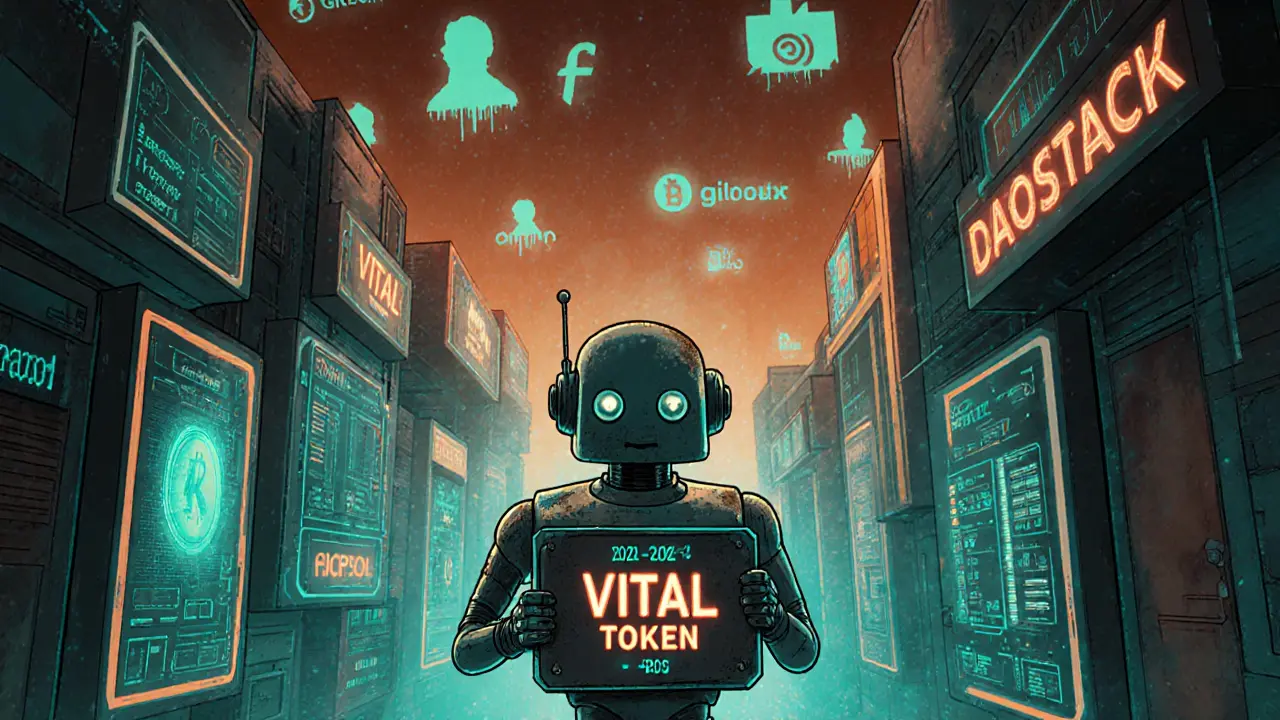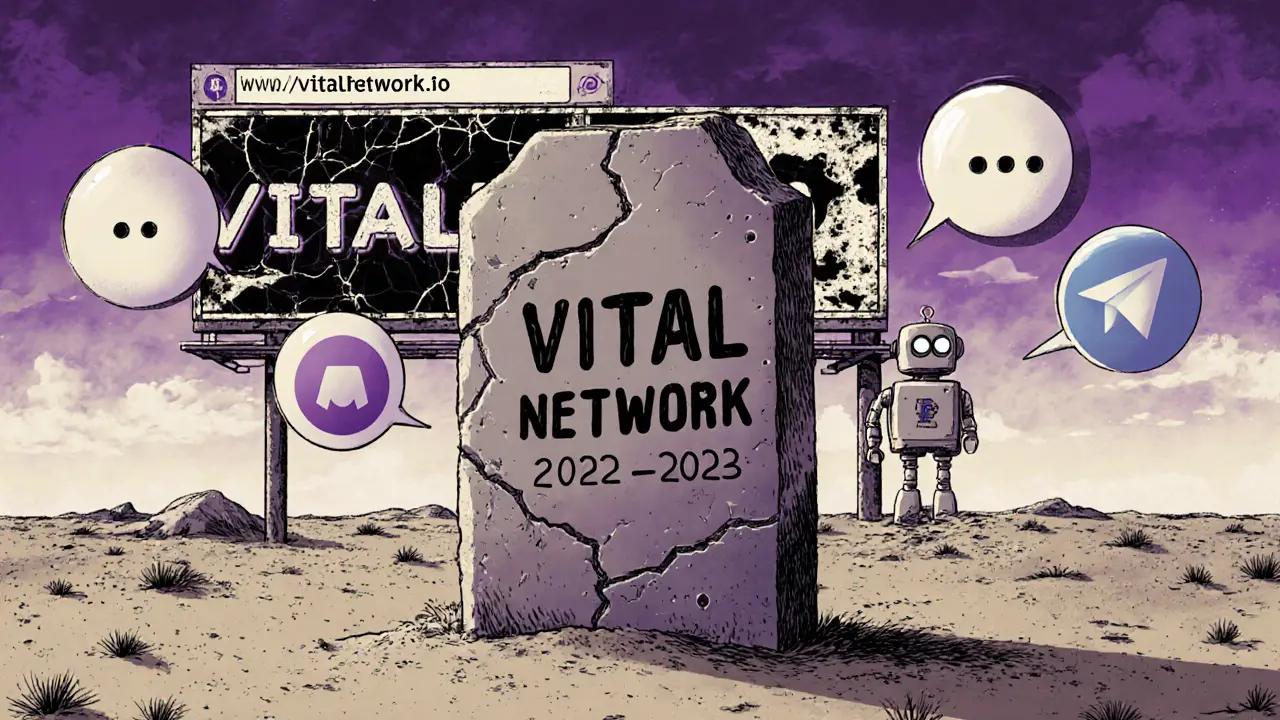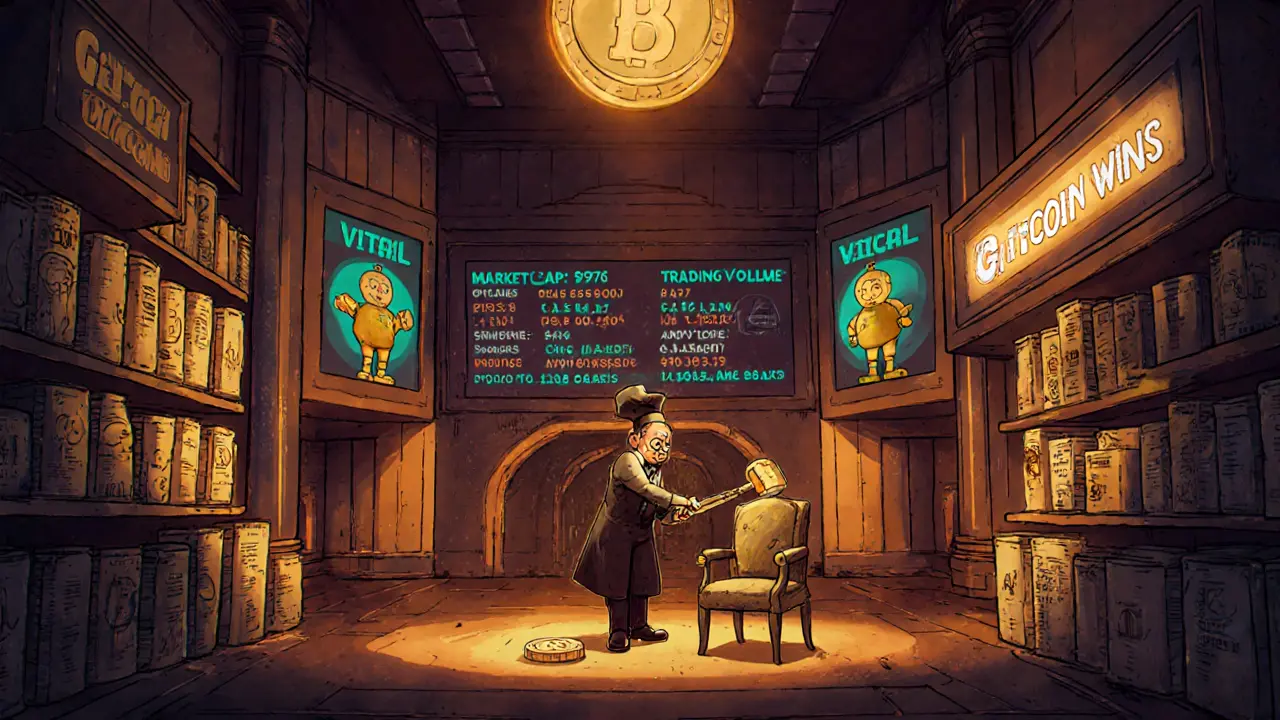What is Vital Network (VITAL) crypto coin? The truth about a dead project
 Nov, 16 2025
Nov, 16 2025
Crypto Project Health Checker
Is This Crypto Project Still Active?
Enter a token symbol or contract address to check if a cryptocurrency project is still operational based on real metrics like activity, liquidity, and community presence.
Vital Network (VITAL) isn’t a crypto project you should invest in, trade, or even pay attention to - not because it’s risky, but because it’s already gone. Launched in June 2022, VITAL was marketed as the first blockchain-based crowdfunding platform that let anyone raise money for weddings, medical bills, or retirement using smart contracts. The idea sounded simple: cut out middlemen, let people fund each other directly, and do it all on the MultiversX blockchain. But today, nearly three years later, the project doesn’t exist anymore - not really. It’s a ghost.
What happened to Vital Network?
The VITAL token was supposed to be the fuel for a decentralized crowdfunding app. Users could create fundraising campaigns, others could contribute VITAL tokens, and smart contracts would release funds only when goals were met. Sounds familiar? It should. That’s exactly what Kickstarter and GoFundMe already do - just without blockchain. But unlike those platforms, Vital Network never got off the ground. There are no active campaigns. No verified users. No transaction history on the MultiversX blockchain. If you check the official token contract address (VITAL-ab7917), you’ll see zero transfers in the last 90 days. Not one. Not even a test transaction. The platform’s website, vitalnetwork.io, now redirects to a blank placeholder page. The Twitter account @VitalNetworkDAO hasn’t posted since June 2023. The Discord server has 127 members, but no messages in six months. The Telegram group has three posts in the last 30 days.Market data tells the real story
CoinMarketCap still lists VITAL with a market cap of just $976.17 as of November 16, 2025. That’s less than the cost of a decent smartphone. It’s ranked #7068 out of nearly 25,000 cryptocurrencies. For comparison, the smallest legitimate crypto project with real usage has a market cap of at least $1 million. VITAL isn’t just small - it’s invisible. Trading volume? Around $0 to $0.05 in 24 hours. That’s not illiquid - it’s dead. The price varies wildly across exchanges: $0.00000006 on CoinMarketCap, $0.00000019 on Coinbase, $0.000000029 on midforex.com. Why? Because nobody’s trading it. These numbers are just placeholders. There’s no real demand. No buyers. No sellers. Just bots pretending to trade. The token’s max supply is 10 billion. But here’s the weird part: CoinMarketCap says 9.31 billion are in circulation. Coinbase says 0 are in circulation. Both list the same total supply. That’s not a data error - it’s a sign the project isn’t being maintained. No one knows how many tokens are actually out there. No one cares.Why does this matter?
If you’re thinking about buying VITAL because it’s cheap, think again. A $0.00000006 coin isn’t a bargain - it’s a trap. Low price doesn’t mean low risk. It means zero liquidity. You can’t sell it. No exchange will let you. Even if you could, there’s no one to buy it from. You’d be stuck with digital garbage. The project’s own claims don’t hold up. It says it’s “the only platform across all blockchains to offer crowdfunding secured by smart contracts.” But that’s false. Gitcoin, DAOstack, and MolochDAO have been doing this for years - and they’ve moved millions in real funds. Vital Network? Zero. Nada. No public records. No on-chain proof. No case studies. No testimonials. Reddit users called it a “ghost project.” One post with 87 upvotes said: “VITAL has zero utility and appears to be a ghost project - avoid completely.” That’s not an opinion. That’s a fact backed by data. There’s no community. No development. No roadmap updates since 2022.
How does it compare to real crowdfunding crypto projects?
Real blockchain crowdfunding projects don’t die quietly. RAMP Network raised over $18 million in market cap and has active grants distributed via smart contracts. Gitcoin’s Q3 2023 grants totaled $15.7 million. DAOstack handled $24.3 million in decentralized funding in 2023. All of them have active developers, public dashboards, and verified transactions. Vital Network? It doesn’t even have a GitHub repo. No code commits since 2022. No audits. No whitepaper updates. No team members listed. No social media engagement. No exchange listings beyond one tiny platform. It doesn’t just lag behind - it’s not even in the race.What do experts say?
Industry analysts at Messari labeled VITAL as a “low-effort token project with unsustainable tokenomics.” Delphi Digital calls it a “zombie token” - a project with less than $1,000 market cap and no activity for over a year. CoinGecko doesn’t even list it because it fails their minimum requirements: $10,000 market cap and $50,000 daily volume. Only CoinMarketCap still carries it - and their listing standards are far looser. Even the price forecasts are pathetic. midforex.com predicts VITAL will hit $0.000000238 by 2030. That’s a 7.6x increase from today’s price. But Bitcoin is projected to be worth $500,000 by then. VITAL’s value would be 0.0238% of Bitcoin’s price. Healthy tokens maintain 0.5% to 2%. VITAL isn’t growing - it’s decaying.